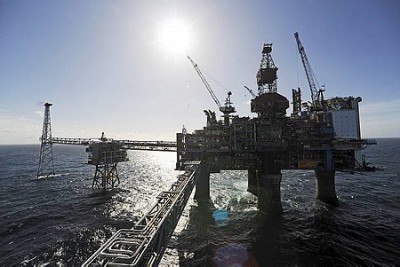 COMMENTARY: Oil wealth, high prices and a relatively high standard of living don’t mean Norway is free from a certain degree of public poverty. Debate continues over why such a wealthy country doesn’t have top-notch schools, better roads and a train system that works, or why patients often must face waiting lists for medical care. In some ways, not much has changed since journalist and author Solveig Torvik (photo) had a conversation with a former head of government 36 years ago.
COMMENTARY: Oil wealth, high prices and a relatively high standard of living don’t mean Norway is free from a certain degree of public poverty. Debate continues over why such a wealthy country doesn’t have top-notch schools, better roads and a train system that works, or why patients often must face waiting lists for medical care. In some ways, not much has changed since journalist and author Solveig Torvik (photo) had a conversation with a former head of government 36 years ago.
In 1975, when it had dawned on Norwegians just how rich they were about to become from North Sea oil, I asked Prime Minister Trygve Bratteli whether Norway would be spending its newfound wealth on better schools, roads, medical services, eldercare and on universal telephone service.
The prime minister responded with visible alarm. It’s impossible to spend Norway’s wealth inside the nation without triggering inflation, he assured me. Besides, oil profits must be invested outside the country to ensure that coming generations continue to have money for their generous welfare benefits and other national needs after the oil runs out, he explained.
While this struck me as high-minded and responsible, I couldn’t escape the impression that the country’s leaders were terrified of all this money and couldn’t get it out of the country fast enough.
Smiling, Bratteli then impishly added: “But we do have more money than the Swedes.”
Today Norway has more money than almost anyone, though you’d never know it. Debt free, (!) this nation of just under 5 million souls at the moment has a staggering USD 530 billion worth of overseas investments in its oil fund, Norwegian Pension Fund-Global. Only the Abu Dhabi Investment Authority’s sovereign investment fund is larger.

Yet spending its oil wealth is strictly limited. Norway’s so-called handlingsregel dictates that the government can only spend 4 percent of its oil fund per year, in line with its average returns. That has meant that only 11 percent of national budget expenditures typically are funded from oil profits. Such fiscal restraint has earned the country high marks for responsible handling of its oil wealth from the International Monetary Fund. And 35 years on, Norway’s mantra remains unchanged: spending its oil money too freely will end in tears.
This is why visitors would never guess, judging from the country’s public infrastructure and services, that they’re in one of the world’s wealthiest nations. “Norway has what is often called ‘public poverty,’” says Ole Andreas Lindeman, deputy director general of the Norwegian Ministry of Trade and Industry. “The public sector is poor.”
This is painfully obvious. Norway has not invested in itself. First-class roads, trains, schools, universities and hospitals have not been high priorities – though it must be said that some of its prisons are among the best in the world.
This investment strategy does have its critics. One of them is American Wall Street economic consultant Michael Hudson, who recently visited Oslo to warn that Norwegians should be prepared for the possibility of losing half the oil fund’s value overnight. He pointedly advised that instead of investing in such things as risky London and New York real estate, it would be wiser to build infrastructure at home, improve Norwegian universities and become world leaders in technology in order to be positioned as globally competitive post-oil.
Aside from its breathtaking scenery, visitors most often are impressed by the country’s breathtaking prices. Norway isn’t a good value for tourists. But despite the sky-high cost of consumer goods, Norway isn’t expensive for Norwegians, argues Erling Røed Larsen, a Norwegian economist.
That’s because one Norwegian work hour buys more than those of workers in many other comparable countries. French workers pay more than Norwegians for a loaf of bread in terms of working hours, for example. (Norwegians work 1,425 hours per year; Europeans work 1,700 hours.) “Not only do we have to work the fewest minutes in the world for most goods here at home, but when we travel, we buy them even cheaper,” he says.
Norway’s high prices commonly are blamed on high labor costs. Norwegian labor is costly because workers are highly educated, highly mechanized and thus more productive, according to Røed Larsen. So it follows that a Norwegian barber must be paid much more for his services than one in Portugal, say, because the Norwegian barber, in theory, can quickly become a much more highly paid oil worker. “That’s the possibility we have to pay for when we visit the barber, otherwise no one would want to be a barber,” he writes in “Everything You Want to Know about the Economy but Never Dared to Ask” (Alt du vil vite om samfunnsøkonomi men aldri har våget å spørre om – Gyldendal Akademisk).
Of course, this economic universe does rest on the fanciful assumption that Norway’s oil platforms are big enough to accommodate the entire Norwegian work force.
“A beer is expensive because the waitress is to be paid for not going to the North Sea to work in the oil industry. Espresso is expensive because the barista is to be persuaded to make coffee instead of working for Norsk Hydro. Haircuts are expensive because the barber is to be paid for not taking a well-paid job with Ekornes or Statoil,” he writes.
This explanation of Norway’s high prices seems to suggest that we must factor in a theoretical “lost opportunity cost” for workers toiling in Norway’s less demanding jobs. If so, it’s a labor theory well suited to a welfare state bent on social leveling and on downplaying the relationship between the market value of a worker’s output and his/her financial reward.
Solveig Torvik is a Norwegian-American political journalist and author of “The World’s Best Place: Norway and the Norwegians,” available as an e-book or printable document at www.smashwords.com.
Opinions expressed in commentaries published by “Views and News from Norway” do not necessarily reflect the views of the website but are meant to spur thought and reader response. Please offer your own views in our Reader Response feature.

